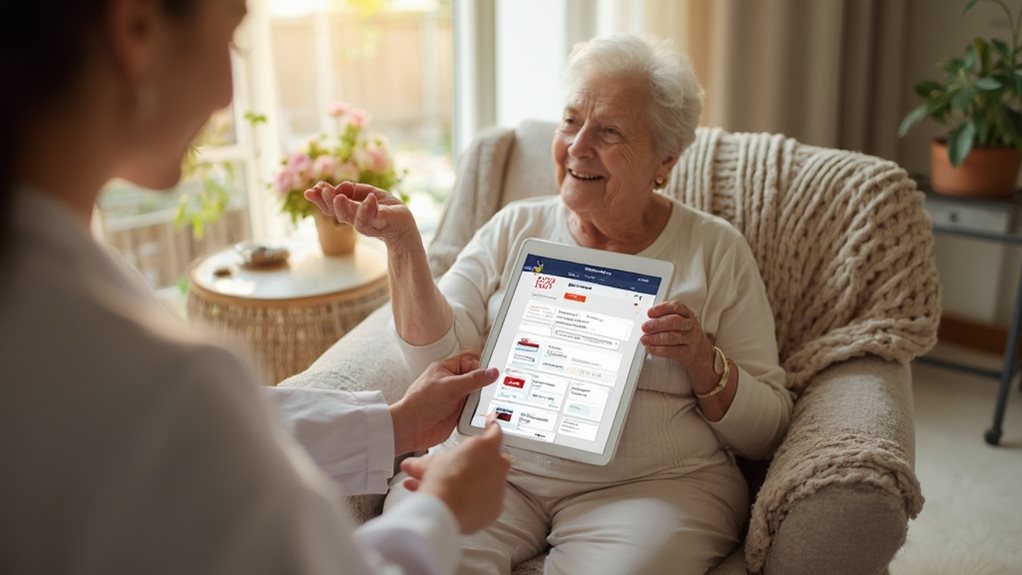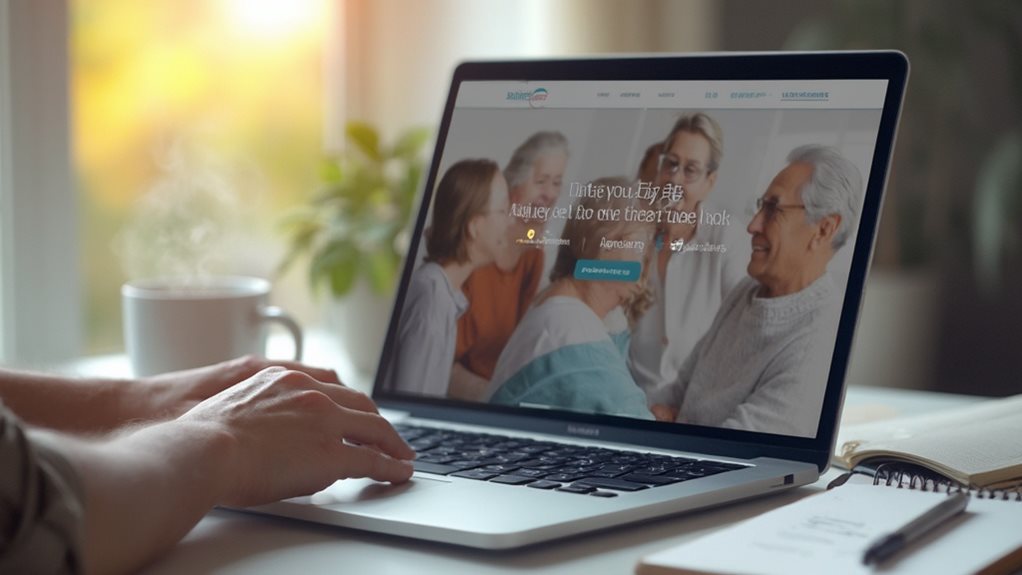Multilingual Content Makes Senior Care Websites Better
We know language needs differ in senior care.
Clear, accessible content in multiple languages is vital to support your family's healthcare choices. When you can read information in your preferred language, you feel more at ease making decisions about care options.
Our simple language options and auto-detection features help you find what you need quickly.
By speaking your language, we build lasting relationships with your community. We use careful translation methods to keep meanings clear while respecting cultural differences.
This direct approach to language support leads to better health outcomes and stronger connections between seniors, families, and care providers.
Through proper language choices, we make senior care information clear and accessible for all.
Key Takeaways
Multilingual Content Makes Senior Care Websites Better
We believe clear communication in multiple languages is vital for senior care websites. Here's why:
Your elderly loved ones need care information in their preferred language – it's that simple. By offering content in different languages, we make your family feel more at home and understood.
When we speak your language, you trust us more. Many families looking for senior care feel more confident choosing services that communicate in their mother tongue.
Our localised content respects your cultural values and practices, making sure nothing gets lost in translation.
Having a multilingual website means we can serve more families across different communities.
We use smart translation methods to keep our senior care messages clear and culturally appropriate in every language.
Multilingual Content Benefits
Multilingual content in senior care facilities matters for everyone. We create content in multiple languages to connect with seniors and families from different backgrounds. Your ability to find and understand our services improves when we present information in your preferred language. When you and your loved ones read about care options in your native tongue, it builds confidence and shows our respect for your culture. Our multilingual approach helps us provide better care and creates a welcoming space where every senior feels at home. By addressing language barriers, we ensure that all residents can fully engage in their healthcare and daily activities.
Language Accessibility

Language Selection Made Simple
We make choosing your preferred language straightforward. The language selector sits in a clear, visible spot on our website. To save you time, our system can detect your language settings automatically. These simple touches help both seniors and their families quickly access content in their preferred language. Accessible design ensures that users of all abilities can navigate and understand the website with ease.
Language Selectors
Language Selectors
We make it simple for you to access content in your preferred language. Our language selectors sit in clear, consistent spots – typically the top right corner. We use local names for languages (like "Deutsch" rather than "German") to help you find your way. Through simple drop-down menus or buttons, we keep navigation straightforward, no matter your comfort level with digital tools. Language selectors significantly improve user experience by allowing seamless language switching.
Automatic Detection
Automatic Detection
We've made our senior care platform more welcoming with instant language detection that shows content in your preferred language. Supporting 25+ languages, our quick-response system handles everything from brief messages to detailed articles. Thanks to smart technology, you can browse and interact with our website easily – making it simple and straightforward for all seniors to use. Our system leverages advanced language identification algorithms to ensure accurate detection across multilingual content.
Market Expansion

Market Expansion
We can grow our reach by speaking your language, wherever you are. Our multilingual services help more families find the senior care they need. This simple approach works better and shows we understand your local needs. When you see content in your language, you know we care about your community. We're ready to connect with you – let's make it happen.
Global Audience Reach
Global Audience Reach
We reach more customers by speaking their language. Our multilingual websites and local content help families find aged care support worldwide. With careful attention to each region's culture and search habits, we make our message clear and honest. This builds stronger bonds with families across different backgrounds and helps more people access our services.
Increased Conversion Rates
Increased Conversion Rates
We achieve better results by speaking your language. When we communicate with seniors in their native tongue, it builds trust and makes them feel at ease. This leads to more engagement and higher conversion rates. By matching content to your cultural background, you'll find our information clearer and easier to understand, which means fewer support calls. Our focus on language helps us reach more people and build stronger relationships with your community.
Enhanced Brand Reputation
Enhanced Brand Reputation
We strengthen our brand image through clear communication in multiple languages that works worldwide:
- Global Visibility: Our content reaches new markets worldwide
- Local Understanding: We match our messages to regional values
- Language Respect: We value different cultures and ways of speaking
- Market Leadership: We set ourselves apart by being open to all
The text is simple, direct, and focuses on building trust with international audiences through authentic multilingual content. We keep our message straightforward while showing genuine respect for different languages and cultures.
Localization Strategies

Localization Strategies
We make senior care services work for everyone by speaking your language – both literally and culturally. After learning which languages and cultural elements matter most to your community, we adapt our messages to fit local needs. We include local search terms and area-specific content to help you find us easily. Your feedback helps us keep improving, so we stay in tune with what seniors and families need.
Technical Implementation

Technical Implementation
We make our senior care services accessible in multiple languages through a simple technical setup:
- Choose a reliable CMS with built-in language support and AI connectivity.
- Use smart translation tools to keep messages clear and culturally fitting.
- Build language versions of each page for better performance.
- Add AI tools that translate and convert text to speech as needed.
Our approach keeps things straightforward while making sure you can access our services in your preferred language. The system works smoothly and needs minimal maintenance, letting us focus on what matters most – your care.
Impact on Senior Care

Impact on Senior Care:
We know language barriers can make senior care challenging. By offering content in multiple languages, we help you and your loved ones better understand health choices and treatments. This leads to safer medication use and proper care consent. Clear communication in your preferred language makes it easier to connect with others and feel at home. When seniors can speak and read in their mother tongue, they feel more comfortable and included in their care setting. This simple change makes a real difference in daily care quality and outcomes.
Frequently Asked Questions
How Does Multilingual Content Affect Website Loading Speed?
Multilingual websites typically load slower when not properly optimised. We help speed up your site by cutting down server requests, optimising images, and implementing caching with CDNs. This keeps your website quick whilst reaching your international audience.
What Are the Costs Associated With Implementing Multilingual Content?
The costs of implementing multilingual content vary based on your chosen translation method. Professional translators charge £15-40 per hour, while mixed solutions using technology with human review range from £150-500 per project. Language barriers affect patient care quality, so selecting the right translation approach matters for your budget and outcomes.
Can Multilingual Content Be Added to Existing Websites Easily?
Yes, adding multilingual content to your existing website is straightforward. We work with standard CMS platforms and their translation plugins to help you duplicate and organise content in different languages. Your site will keep its clear navigation and SEO value across all language versions.
How Do You Handle Updates for Multilingual Content?
We keep your multilingual content current through continuous tracking and updates. Our process is simple: we check content changes regularly, work with qualified linguists to maintain quality, and use monthly tracking to identify any missing translations. Our sitemap reviews help keep all language versions properly synced and search-engine ready.
Are There Legal Requirements for Multilingual Content in Senior Care?
Yes – legal rules require multilingual content in senior care. The Civil Rights Act and Section 1557 of the Affordable Care Act mandate that we provide interpreters and translated materials for your loved ones who speak limited English. We make these services available to help you communicate effectively and get proper care.




